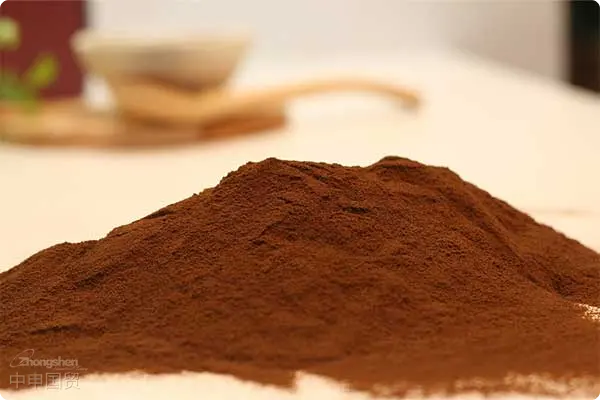- Shanghai Zhongshen International Trade Co., Ltd. - Two decades of trade agency expertise.
- Service Hotline: 139 1787 2118
As a high-value-added beverage, coffee powder is favored by consumers for its unique taste and quality. Particularly coffee powder originating from Malaysia, with its distinctive flavor and high quality, is highly welcomed in the market. So what should you pay attention to when importing food-grade coffee powder? Based on specific cases, this article will provide detailed information about food-grade coffee powderImport Clearancecomplete process, including required documents, tax rates, customs clearance procedures, and precautions, aiming to provide comprehensive guidance and reference for relevant enterprises.

I. Case Study on Food-Grade Coffee Powder Import
A certain auto parts company entrusts
A food companyZhongShen International Tradehandled a batch of coffee powder imports through dual-header agency import, with goods shipped from Malaysia to China via Shanghai Port. This import involved 602 cases of coffee powder, including white coffee and extra-strong coffee solid beverages, totaling 4,516.5 kilograms.
?Transportation Method: Waterway transportation
(1) Product Name:Coffee Powder (Solid Beverage)
(2) Country of Origin:Malaysia (MYS)
(3) Import Quantity:602 cases
(4) Transportation Method:Waterway Transport
(5) Packaging Type:Paper or Fiberboard Boxes/Cases
(6) Gross Weight/Net Weight:5,568.04 kg/4,516.5 kg
(7) Transaction Method:CIF (Cost, Insurance and Freight)
,Including invoice, label identification, supporting documents, veterinary (health) certificate,It is recommended to verify through the following methods:Origin documents, bill of lading/waybill, packing list, etc.
(9) Commodity code:2101120000
(10) Commodity name and specifications:White coffee (solid beverage), extra strong coffee (solid beverage)
(11) Final destination country/region:China (CHN)
II. Coffee Powder Import Tariffs and Value-Added Tax
? Most-favored-nation tariff rate:12%
? VAT rate:13%
There are various types of coffee powder, and different HS codes correspond to different import tax rates. Therefore, accurate classification of commodity codes is required before importation to determine the applicable tax rate.
III. Required Documentation for Coffee Powder Import
Invoice:Specify detailed information such as product name, specifications, quantity, unit price, and total price of the goods.
Label identification:Provide origin labels and Chinese labels to ensure compliance with Chinas food labeling regulations.
Supporting documents:Including ingredient list, production date, shelf life, etc.
Veterinary (health) certificate:Certify that the goods meet the health standards of the importing country.
Origin evidence documents:Prove the origin of the goods to ensure eligibility for corresponding tariff preferences.
Bill of lading/waybill:Provide information on the transportation and ownership of the goods.
Packing list:Specify the contents and specifications of each box in detail.
Others:Other documents that customs may require, such as enterprise qualifications, import licenses, etc.
IV. Coffee Powder Customs Clearance Process
Before shipment:
Organize required documents:Ensure that all documents are complete and accurate.
Check the document information of the product:Ensure that the document information matches the actual condition of the goods.
Organize declaration element information:Including product name, specifications, quantity, unit price, total price, country of origin, final destination country, etc.
Operations after the goods arrive at the port:
Exchange for delivery order:Obtain the delivery order from the shipping company or its agent.
Customs Declaration and Inspection:Submit customs declaration and inspection documents to customs and inspection authorities.
Tax Review and Payment:Customs reviews tax amounts and issues tax bills; enterprises pay tariffs and VAT according to the tax bills.
Random Inspection:Customs may conduct random inspections to ensure declared contents match the actual goods.
Release:After customs inspection confirms no issues, the goods are released.
Delivery to Customers Designated Warehouse:Arrange logistics to transport the goods to the customers designated warehouse.
Destination Inspection (Random):Conduct random inspections at the destination to ensure compliance with relevant regulations.
V. Precautions
Document Accuracy:All documents must match the actual condition of the goods to avoid customs clearance delays due to discrepancies.
Label Compliance:Provide Chinese labels compliant with Chinas food labeling regulations, ensuring label information is accurate.
Quality Inspection:Ensure imported coffee powder meets Chinas quality standards to avoid customs clearance obstacles due to quality issues.
Hygiene Standards:Provide veterinary (hygiene) certificates compliant with Chinas hygiene standards, ensuring goods meet the importing countrys hygiene requirements.
Tax Rate Confirmation:Confirm the HS code of the goods before import to ensure accurate tax rates.
VI. ZhongShen International Trade Import Services
Import Agency Services:
(1) Customs Declaration and Inspection
(2) Dual-Header Agency Import
(3) Foreign Exchange Payment on Behalf
Import Logistics:
(1) International Shipping by Sea, Land, and Air
(2) Warehousing and Handling
(3) Goods Pickup and Delivery
Value - added services:
(1) Document review
(2) Inspection assistance
(3) Label rectification, etc.
Conclusion
Through the detailed coffee powder import customs clearance process and considerations introduced in this article, we can see that successful import customs clearance requires thorough preliminary preparation, accurate documentation, and professional operational procedures. With a professional team and extensive experience, ZhongShen International Trade can provide clients with efficient and professional import customs clearance and delivery services, ensuring the smooth import of every shipment. If you require agency import services for food products, please feel free to consult us online. We are committed to providing you with the highest quality service.
Related Recommendations
Category case
Contact Us
Email: service@sh-zhongshen.com
Related Recommendations
Contact via WeChat

? 2025. All Rights Reserved. Shanghai ICP No. 2023007705-2  PSB Record: Shanghai No.31011502009912
PSB Record: Shanghai No.31011502009912









